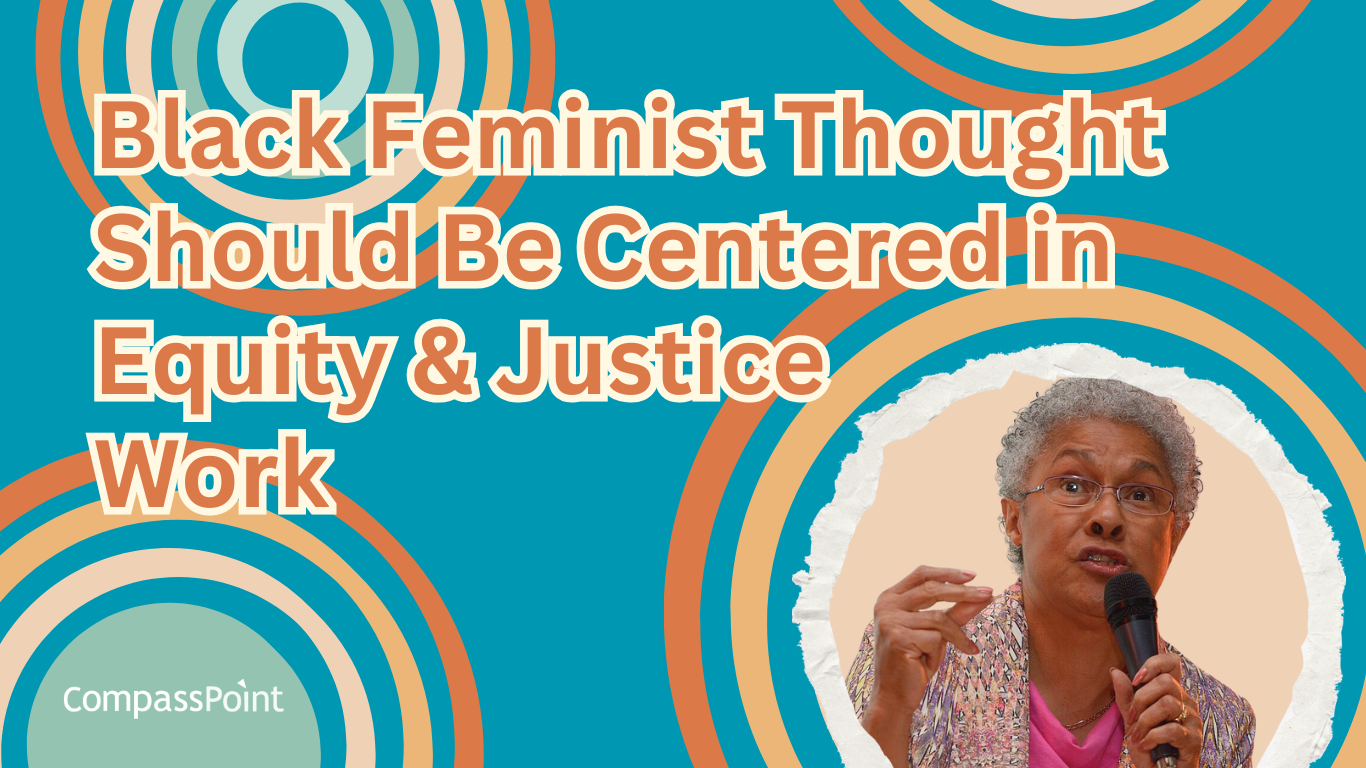This is the fourth blog in our series around our journey to center racial justice, equity, and a vision for leadership in service of liberation at CompassPoint. Catch up with the first three blogs. Over the next few entries, we'll be talking about how we reimagined compensation at CompassPoint.

Image by Madison Inouye sourced from Pexels.Com.
The story of our ongoing organizational transformation is incomplete without sharing some of the real, concrete changes we’ve made to our organizational systems and structures—in this case, how we think about and approach compensating staff. Compensation is where our values are tested, our willingness to take (real or perceived) organizational risks is codified, and ultimately where decisions are made that directly affect people’s livelihoods. That’s why we’re going a little deeper and sharing our story of reimagining compensation at CompassPoint over the next three blogs.
At the heart of all our work toward justice and equity lies a redistribution of power and resources that have been tilted to flow in a particular direction. For many nonprofits, that flow of power and resources has been in the direction of white, upwardly mobile, leadership. The work of shifting this tilt and achieving balance takes courage, boldness, and relentless attention. It requires us to challenge each other to think and rethink the assumptions we hold about what work is valued in what ways and why.
I’m a white woman who has spent the last two decades in roles with increasing levels of accountability and power in nonprofits. While my story is unique to who I am, it is also rife with patterns we see across the sector that result in a disproportionate number of white women in nonprofit leadership positions, especially in executive, financial, and operational roles. Early in my career, when I expressed some interest in (but little knowledge of) financial duties, I was trusted and supported (by others, mostly white, women) to learn and grow. Too often, this has not been the case for people of color for whom similar interest and appetite can be met with mistrust and micromanagement.
By the time I transitioned from a program-facing role into a “financial steward” role here at CompassPoint, we were already in the process of reflecting on and making some significant changes to our approach to compensation. While I was deeply supportive of this process as a staff member, once I stepped into a role that needed to engage directly with the questions we grappled with, I found myself pushed to uproot some ingrained thinking. Over and over we had to face some “truths” or “best practices” about what we can—and “can’t”—do related to compensation, and call out the frequent fallacy of that thinking. For me, this required an interrogation of both what I’ve learned as a “finance professional” and of my conditioning and privilege as a white woman. Some of what I am carrying with me from this experience includes a deeper understanding that:
Building on the inequities of the past won’t set a foundation for a just future. Giving people percentage-based raises often reinforces existing inequities. When we set out to reimagine compensation to become more equitable at CompassPoint, the depth of realignment between our work and our values meant that some folks received significant increases compared to their existing salaries, while others received small or no increases, or even agreed to a phased reduction in their salary.
We have to engage in risk leadership, not risk management. This work requires that we push the edges of our thinking around legal compliance and organizational risk. As finance and human resource professionals, it requires that we share our technical knowledge with others and collectively interrogate those “rules” and how we can yield them for justice.
It is continuous work to uproot, over and over again, the pervasive nature of internalized dominance and paternalism. Part of our ongoing work when we’re holding roles with formal organizational power is to recognize and address those moments when we think we know what’s best. Push, pause, listen to other perspectives, and make room for that thinking to dissolve and take new, more resilient shapes.
Many nonprofits—and CompassPoint is certainly not immune to this—are more reflections of the world we’re in than antidotes to it. We often, consciously or unconsciously, adopt cultural assumptions from white patriarchal systems—that are also encouraged and reinforced by our funders and donors—about what work should be valued and why. Sometimes this means replicating assumptions about valuing certain kinds of professionalized knowledge such as legal or financial knowledge, emphasizing the importance of “producing output” over deepening relationships or insisting on the need for formal education without recognizing the deep wisdom that comes from lived experience. Other times, it means adopting a charity mindset or accepting a vow of poverty by creating salary structures and grant proposals in ways that perpetuate the belief that working toward social justice should not be financially compensated because it is “rewarding enough” to be working for a better world.
But the truth is, if we are going to support an infrastructure that effectively nurtures and amplifies our communities’ efforts toward a more just world, we have to stop doing it on the backs of folks doing the day-to-day work of social change and directly address how our own compensation systems, and the assumptions that underlie them, are often reflections of the inequities within our larger world. For CompassPoint, this shift required significant challenges to some of our existing paradigms.
The Funding Model Elephant in the Room
Before going any further, I want to address the elephant in this series of posts: “OK,” you might be thinking, “our organization is ready and willing to grapple with the issues of what people are paid and why, but how did you actually make the money work to make significant changes in your compensation structure?” About this, I want to be very clear: we would not have been able to do the work we did at this pace without significant multi-year general operating support from a foundation.
Most nonprofits—including CompassPoint—are not capitalized to be able to make these kinds of shifts to our cost structure, especially in the relatively short timeline of two or three years. If we had not had this infusion of “change capital” in 2016 I suspect we still would have made some changes to our compensation structure, but the change would likely have been more incremental and unfolded over an even longer time period.
Funders, if you are reading this, please consider this as just one more reason (in addition to this and this and this) to double down on general operating support for community organizations if you are committed to real justice and equity.
Where Were We Starting From?
The work we took on at CompassPoint to realign our compensation system in service of greater equity started in 2016, and while we’ve made some significant and lasting shifts to our structure, tools, and process, this is an adaptive, ongoing change that will require continual reflection and tending. Just like everything else we’ve shared in these blogs chronicling our organizational transformation, it’s not perfect, and it’s not “complete”.
What we learned along the way is that this was not about giving people “raises” or “evaluating performance” in the traditional way we’ve come to think about those concepts; this was about an attempt to fundamentally correct some of the places in which dominant culture thinking had infected our own perspectives about compensation and career growth. This required overhauling assumptions and rethinking at a foundational level about what we value and why.
A few things called us to take this on in a more explicit and focused way. First, we were sharing leadership and power more explicitly and fluidly but we did not have an approach to compensation that recognized when people were stepping into new areas of responsibility with increasing levels of risk and impact.
There were also very clear race- and gender-based patterns playing out within our organization that needed to be addressed directly and systemically if we were going to live into our stated commitments around race and gender equity in our work. The picture of CompassPoint at that time is not unfamiliar to the nonprofit sector overall. At the time, nearly all director and executive-level positions were held by white women and men of color. Black women were exclusively in support and “lower-level” operational roles. There was frustration about a glass ceiling in which director-level staff had been consistently hired from outside the organization without a clear path for folks to develop internally.
Our policy at the time allowed for a pay differential of highest-paid staff earning up to five times the lowest-paid staff. While in reality we were not near that level of disparity (prior to taking this on the executive director was making 3.8 times the lowest paid staff), it still set a parameter and explicit assumption about the level of pay discrepancy that we were willing to accept. Given what I shared above in terms of who was in what roles, it was clear that we were perpetuating race- and gender-based pay gaps that were in direct opposition to our stated values. We also recognized that the lowest pay rate in the organization at that time ($38K) was far too low for the very expensive and rapidly increasing costs of living in the Bay Area. The very first step we made was to update our policy to limit the pay differential to no greater than three to one and immediately raise the lowest salaries in the organization to a base of $50K.
A Path Toward Reimagining Compensation
At the heart of this shift was an acknowledgment that as our work changed, and our vision of leadership and organizational development work as a means to accelerate racial justice and equity became clearer, we needed to fundamentally challenge some assumptions about who holds valuable knowledge and experience and, how that translates into how people are paid.
To address that head-on, we needed structural changes aimed at:
- updating our systems to reflect new values,
- restructuring how compensation decisions are made,
- and simplifying the career framework, and making the pay gap smaller.
In the second part of this blog, we’ll share a bit more about how we approached each of those structural changes, but for now I will leave you with this parting thought: if we are not willing to confront the day-to-day inequities in our organizations, how can we possibly have the boldness and courage to do this with our communities?
Read the other blogs in this series:
- Putting Racial Justice at the Center: How Did CompassPoint Get Here?
- A Vision for Belonging
- We Can't Work Toward Racial Justice Without Working On Relationships
Resources:
- Staffing the Mission: Improving jobs in the nonprofit sector A Class Action report by Betsy-Leondar Wright and Anastasia Lynge
- How Can Philanthropy Reimagine Relationships? from Trust-Based Relationship
- How the Focus on Overhead Disenfranchises Communities of Color and Fans the Flames of Injustice by Vu Le (Nonprofit AF)
- Why Funding Overhead is Not the Real Issue: The Case to Cover Full Costs by Claire Knowlton





Submit a comment
(1) Comments
Shria Tomlinson replied on Permalink
Thank you for sharing your organization's journey to interrupting a system of inequity that impacts our industry. I have always respected the work this bold action demonstrates walking the walk. This is an example of why you are a thought leader in this space.